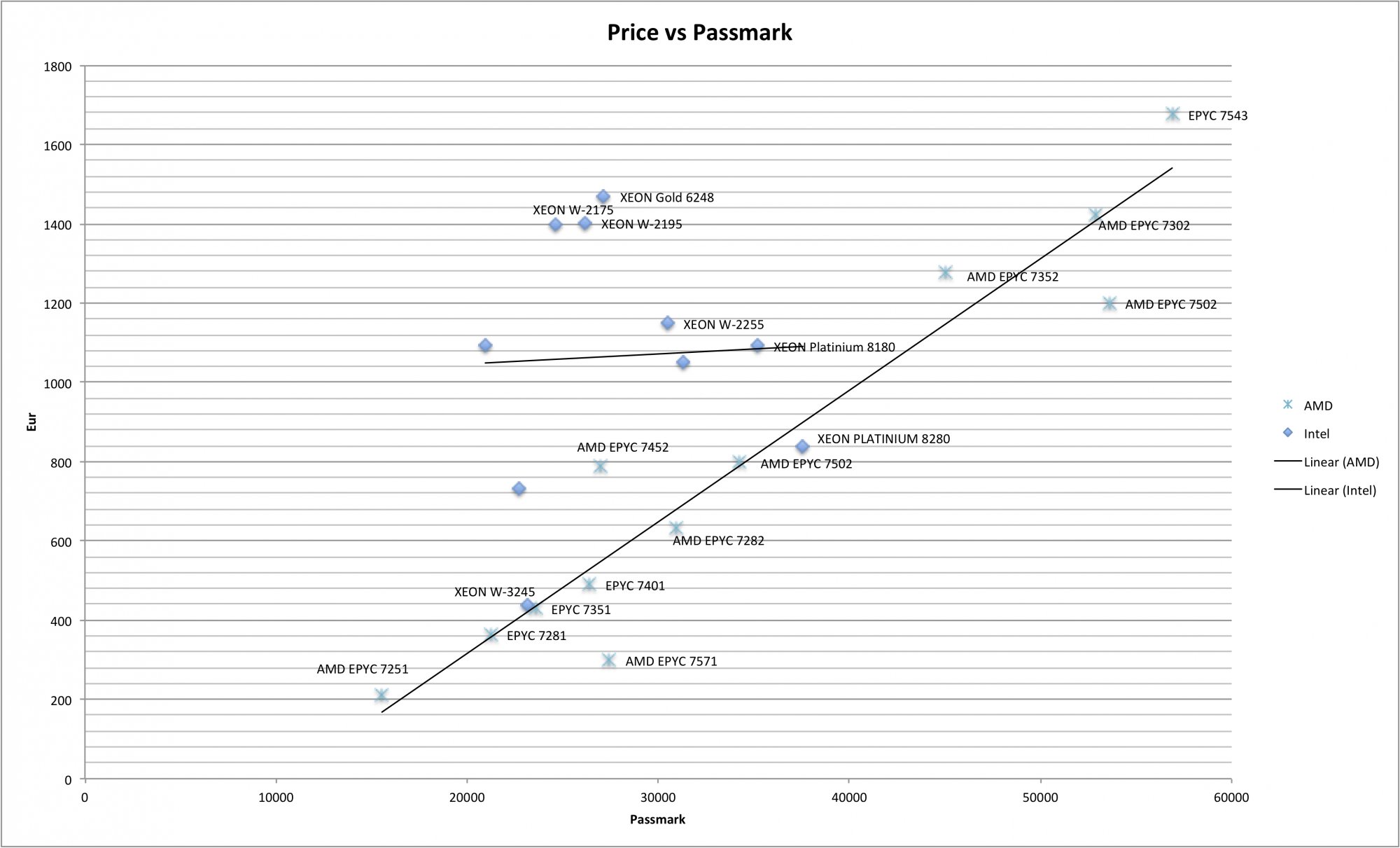I have been intently following the prices of both Intel Xeon and AMD Epyc processors in the eve of Zen3 launch of Feb 15th. Xeon has an ability to have a maximum of 4P in one Supermicro X12 or X11 motherboard (they are said to be quite hard to boot and quite expensive Supermicro X11QPH+ costs 1268 euros VAT 0%). Epycs have more cores (max 64 cores per processor) but they are limited to 2P motherboards such as Gigabyte MZ72-HB0 for 772,73 euros VAT 0%. The Zen3s are launching Monday 15th of February 2021, so is there any feeling of PRICE WAR between Intel and AMD. The prices were collected from Alibaba.com and Ebay.de.


![[H]ard|Forum](/styles/hardforum/xenforo/logo_dark.png)
